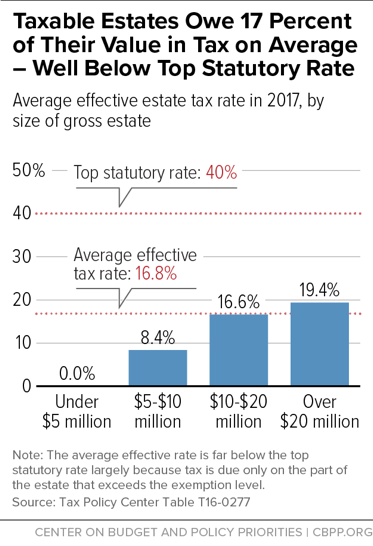All Categories
Featured
Table of Contents

Comprehending the various death advantage choices within your acquired annuity is essential. Carefully review the agreement details or speak with an economic advisor to establish the particular terms and the most effective way to wage your inheritance. Once you acquire an annuity, you have numerous alternatives for getting the cash.
Sometimes, you could be able to roll the annuity right into a special kind of specific retired life account (IRA). You can choose to obtain the entire remaining equilibrium of the annuity in a single settlement. This choice supplies instant access to the funds yet features major tax consequences.

If the inherited annuity is a professional annuity (that is, it's held within a tax-advantaged retired life account), you might be able to roll it over into a new retired life account. You don't need to pay taxes on the surrendered amount. Beneficiaries can roll funds into an inherited IRA, an one-of-a-kind account specifically designed to hold possessions inherited from a retirement plan.
Taxation of inherited Single Premium Annuities
While you can not make extra contributions to the account, an inherited IRA provides an important benefit: Tax-deferred development. When you do take withdrawals, you'll report annuity revenue in the same way the strategy participant would certainly have reported it, according to the IRS.
This choice gives a stable stream of revenue, which can be helpful for lasting economic preparation. Typically, you need to start taking circulations no more than one year after the owner's fatality.

As a beneficiary, you won't undergo the 10 percent IRS very early withdrawal charge if you're under age 59. Trying to determine taxes on an acquired annuity can feel intricate, yet the core concept revolves around whether the added funds were formerly taxed.: These annuities are moneyed with after-tax bucks, so the recipient generally doesn't owe taxes on the initial contributions, however any earnings built up within the account that are dispersed undergo average earnings tax obligation.
Tax consequences of inheriting a Deferred Annuities
There are exemptions for partners that inherit qualified annuities. They can normally roll the funds right into their own IRA and defer tax obligations on future withdrawals. Regardless, at the end of the year the annuity firm will submit a Kind 1099-R that shows how much, if any type of, of that tax year's circulation is taxable.
These taxes target the deceased's complete estate, not just the annuity. These taxes commonly only influence really big estates, so for most beneficiaries, the emphasis needs to be on the earnings tax obligation ramifications of the annuity.
Fixed Income Annuities inheritance tax rules
Tax Treatment Upon Fatality The tax obligation treatment of an annuity's death and survivor advantages is can be rather made complex. Upon a contractholder's (or annuitant's) death, the annuity might be subject to both income tax and estate tax obligations. There are various tax obligation therapies depending upon that the recipient is, whether the owner annuitized the account, the payment approach chosen by the beneficiary, and so on.
Estate Taxes The federal estate tax obligation is an extremely dynamic tax (there are lots of tax braces, each with a greater price) with rates as high as 55% for huge estates. Upon death, the IRS will certainly include all home over which the decedent had control at the time of death.
Any kind of tax in excess of the unified credit score is due and payable 9 months after the decedent's fatality. The unified credit report will completely sanctuary reasonably moderate estates from this tax.
This discussion will certainly focus on the inheritance tax therapy of annuities. As held true during the contractholder's life time, the internal revenue service makes an important distinction between annuities held by a decedent that are in the build-up stage and those that have actually gone into the annuity (or payout) stage. If the annuity remains in the build-up phase, i.e., the decedent has not yet annuitized the agreement; the full survivor benefit assured by the contract (including any improved fatality advantages) will certainly be consisted of in the taxed estate.
Are inherited Joint And Survivor Annuities taxable income
Example 1: Dorothy owned a repaired annuity agreement provided by ABC Annuity Firm at the time of her fatality. When she annuitized the agreement twelve years back, she chose a life annuity with 15-year duration specific. The annuity has been paying her $1,200 per month. Because the agreement assurances repayments for a minimum of 15 years, this leaves 3 years of settlements to be made to her child, Ron, her assigned recipient (Lifetime annuities).

That worth will be consisted of in Dorothy's estate for tax functions. Upon her death, the payments stop-- there is nothing to be paid to Ron, so there is nothing to consist of in her estate.
Two years ago he annuitized the account selecting a life time with money reimbursement payout alternative, calling his child Cindy as recipient. At the time of his fatality, there was $40,000 principal remaining in the agreement. XYZ will certainly pay Cindy the $40,000 and Ed's administrator will include that amount on Ed's inheritance tax return.
Given That Geraldine and Miles were married, the advantages payable to Geraldine stand for property passing to a making it through spouse. Annuity cash value. The estate will certainly be able to utilize the limitless marital reduction to prevent taxes of these annuity benefits (the value of the benefits will certainly be provided on the estate tax obligation form, in addition to a countering marriage reduction)
Fixed Income Annuities and beneficiary tax considerations
In this situation, Miles' estate would certainly consist of the value of the staying annuity payments, but there would certainly be no marriage deduction to balance out that incorporation. The exact same would use if this were Gerald and Miles, a same-sex couple. Please keep in mind that the annuity's continuing to be worth is established at the time of fatality.

Annuity agreements can be either "annuitant-driven" or "owner-driven". These terms refer to whose death will trigger payment of death advantages.
There are scenarios in which one individual possesses the contract, and the measuring life (the annuitant) is someone else. It would certainly be wonderful to believe that a certain contract is either owner-driven or annuitant-driven, yet it is not that simple. All annuity agreements issued since January 18, 1985 are owner-driven because no annuity contracts provided because after that will certainly be granted tax-deferred condition unless it contains language that activates a payment upon the contractholder's fatality.
Table of Contents
Latest Posts
Highlighting the Key Features of Long-Term Investments A Comprehensive Guide to Investment Choices Defining Choosing Between Fixed Annuity And Variable Annuity Features of Smart Investment Choices Why
Understanding Financial Strategies A Comprehensive Guide to Investment Choices What Is the Best Retirement Option? Benefits of Immediate Fixed Annuity Vs Variable Annuity Why Choosing the Right Financ
Understanding Variable Annuity Vs Fixed Annuity Everything You Need to Know About Financial Strategies Defining Annuities Variable Vs Fixed Advantages and Disadvantages of Different Retirement Plans W
More
Latest Posts